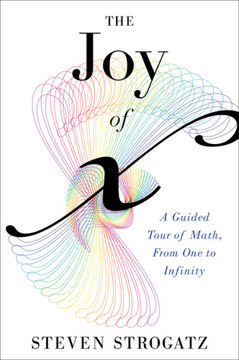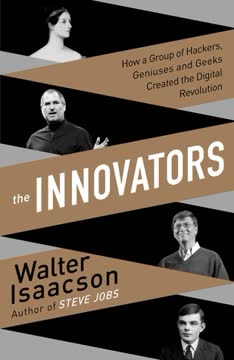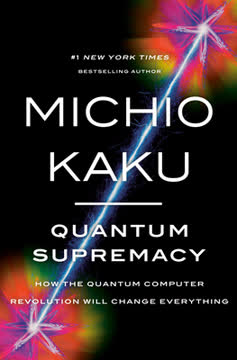Key Takeaways
1. The Hippie Physicists: Unconventional Thinkers Who Saved Quantum Physics
"Long before the huge budgets and dedicated teams, the field moldered on the scientific sidelines."
A paradigm shift. In the 1970s, a group of unconventional physicists emerged, challenging the established norms of their field. These "hippie physicists" were marginalized figures who dared to ask philosophical questions about quantum mechanics when such inquiries were considered taboo in mainstream academia.
Countercultural influences. Drawing inspiration from Eastern mysticism, psychedelic experiences, and countercultural movements, these physicists approached quantum theory with fresh perspectives. They sought to understand the deeper implications of quantum mechanics, particularly its philosophical and metaphysical aspects, which had been largely ignored since the 1950s.
Reviving foundational questions. By focusing on neglected areas of quantum theory, such as Bell's theorem and quantum entanglement, these unconventional thinkers breathed new life into the field. Their work laid the groundwork for modern quantum information science, including quantum computing and quantum cryptography, demonstrating the value of exploring foundational questions in physics.
2. Bell's Theorem: The Cornerstone of Quantum Entanglement
"Bell demonstrated that a hidden-variables model that satisfied locality—in which the properties of A remained unaffected by what measurements were conducted on B—could easily reproduce the perfect correlation when A's and B's spins were measured along the same direction."
Challenging local realism. Bell's theorem, formulated by physicist John Stewart Bell in 1964, proved that no local hidden variable theory could reproduce all the predictions of quantum mechanics. This landmark result demonstrated that quantum entanglement was a fundamental feature of reality, not just a quirk of the theory.
Experimental verification. The theorem's implications remained largely unexplored until the 1970s, when members of the Fundamental Fysiks Group began to investigate its consequences. John Clauser, a member of the group, conducted the first experimental test of Bell's theorem in 1972, providing strong evidence for quantum entanglement.
Far-reaching implications. Bell's theorem and subsequent experiments have had profound implications for our understanding of reality, suggesting that:
- The universe is fundamentally nonlocal
- Instantaneous connections between particles exist
- Our classical intuitions about causality and locality may need revision
These insights have become the foundation for modern quantum technologies, including quantum cryptography and quantum computing.
3. The Fundamental Fysiks Group: A Catalyst for Quantum Renaissance
"The Fundamental Fysiks Group grew fast…. We played a big role at the laboratory, but never an acknowledged role."
Origins and composition. The Fundamental Fysiks Group was formed in 1975 by Elizabeth Rauscher and George Weissmann at the Lawrence Berkeley Laboratory. It consisted of physicists who were marginalized in the mainstream academic world, including:
- John Clauser
- Nick Herbert
- Fritjof Capra
- Jack Sarfatti
- Saul-Paul Sirag
- Fred Alan Wolf
A unique approach. The group's discussions were characterized by:
- Open-ended philosophical inquiries
- Exploration of connections between quantum physics and consciousness
- Willingness to consider unconventional ideas and interpretations
Catalyst for change. Despite their marginal status, the Fundamental Fysiks Group played a crucial role in reviving interest in the foundations of quantum mechanics. Their work:
- Brought attention to neglected topics like Bell's theorem
- Inspired new experimental and theoretical investigations
- Laid the groundwork for the field of quantum information science
By creating a space for unconventional thinking, the group helped bridge the gap between fringe ideas and mainstream physics, ultimately contributing to a renaissance in quantum foundations research.
4. Quantum Mysticism: Bridging Physics and Eastern Philosophy
"To Capra, the central feature of quantum theory—its participatory nature—thus explained not only the outcome of this or that experiment, but the emergence of the universe itself."
Seeking deeper connections. Members of the Fundamental Fysiks Group, particularly Fritjof Capra, explored parallels between quantum physics and Eastern mystical traditions. They saw similarities in concepts such as:
- Interconnectedness and holism
- The role of the observer in shaping reality
- The illusory nature of separate, individual entities
Popular impact. Capra's book "The Tao of Physics" (1975) became a bestseller, introducing these ideas to a wide audience. It sparked a genre of books exploring the relationship between modern physics and ancient wisdom traditions.
Controversial reception. While popular among the public, these ideas were often met with skepticism in the scientific community. Critics argued that the parallels were superficial or based on misunderstandings of both quantum theory and Eastern philosophy. Nevertheless, this approach:
- Helped generate public interest in quantum physics
- Encouraged physicists to consider broader philosophical implications of their work
- Contributed to ongoing debates about the nature of reality and consciousness
5. Patronage and Publicity: How Counterculture Fueled Quantum Research
"Erhard yearned to make an even deeper impact on physics. Fuller told Erhard about Ernest Solvay, the Belgian industrialist and philanthropist who had sponsored a series of elite conferences in the 1910s and 1920s."
Unconventional funding sources. When traditional academic funding became scarce, members of the Fundamental Fysiks Group turned to alternative sources of support, including:
- Werner Erhard, founder of est (Erhard Seminars Training)
- The Esalen Institute, a hub for the human potential movement
- Private donors interested in exploring connections between physics and consciousness
Popularizing quantum concepts. The group's members wrote popular books and gave public lectures, bringing complex quantum ideas to a wider audience. Key works included:
- "The Tao of Physics" by Fritjof Capra
- "The Dancing Wu Li Masters" by Gary Zukav
- "Space-Time and Beyond" by Fred Alan Wolf and Bob Toben
Impact on mainstream physics. This unconventional patronage and publicity had several effects:
- It kept foundational questions in quantum physics alive during a period of neglect
- It helped generate public interest and support for quantum research
- It eventually led to renewed academic interest in quantum foundations
While controversial, this interplay between counterculture and physics played a crucial role in sustaining and advancing quantum research during a challenging period.
6. From Fringe to Mainstream: The Evolution of Quantum Interpretation
"Suddenly all of politics became centered around tax relief," Wolf recalled recently. "And one way to achieve tax relief was to start cutting services, such as funding to the schools."
Shifting paradigms. The 1970s marked a transition in physics:
- Post-war focus on practical applications and "shut up and calculate" mentality
- Funding cuts and job scarcity in traditional physics fields
- Growing interest in foundational questions and interpretations of quantum mechanics
Gradual acceptance. Ideas once considered fringe gradually gained traction:
- Bell's theorem moved from obscurity to central importance
- Quantum entanglement became a key area of research
- Foundations of quantum mechanics re-emerged as a legitimate field of study
Institutional changes. The shift was reflected in academic and research institutions:
- Conferences on quantum foundations became more common
- Journals began accepting papers on interpretational issues
- Funding agencies started supporting research in quantum information science
This evolution demonstrates how ideas can move from the margins to the center of scientific discourse, driven by persistent inquiry and changing cultural and institutional contexts.
7. The No-Cloning Theorem: A Quantum Breakthrough with Real-World Applications
"Herbert's FLASH scheme, while clearly unworkable, elicited a world of cutting-edge physics in its wake."
Unintended consequences. Nick Herbert's attempt to create a faster-than-light communication device (FLASH) led to the discovery of the no-cloning theorem, a fundamental principle of quantum mechanics stating that it is impossible to create an identical copy of an arbitrary unknown quantum state.
Key implications:
- Impossibility of perfect quantum amplification
- Fundamental limits on quantum information processing
- Basis for quantum cryptography and secure communication
Practical applications. The no-cloning theorem has become central to quantum information science:
- Quantum key distribution for unbreakable encryption
- Quantum money that cannot be counterfeited
- Limitations and possibilities in quantum computing
This development illustrates how even "failed" attempts to challenge quantum theory can lead to profound insights and practical applications, underscoring the value of exploring unconventional ideas in physics.
8. The Legacy of the Fundamental Fysiks Group: Shaping Modern Quantum Science
"How far we have come from Jack Sarfatti's vision of drugged CIA agents instantly receiving brain-wave communiqués from headquarters; or, indeed, from Nick Herbert's metaphase typewriter, with which he had hoped to contact the spirit of Harry Houdini, and which Sarfatti credited as a major motivation behind Herbert's FLASH scheme."
Enduring impact. Despite their unconventional approaches and marginal status, the Fundamental Fysiks Group left a lasting mark on quantum physics:
- Revived interest in quantum foundations and interpretations
- Contributed to the development of quantum information science
- Inspired a generation of physicists to explore philosophical questions
Transformation of the field. Their work helped reshape quantum physics:
- From a purely mathematical formalism to a field rich with philosophical implications
- From a focus on practical applications to renewed interest in fundamental questions
- From a marginalized topic to a central area of research and technological innovation
Cultural influence. Beyond physics, the group's ideas permeated popular culture:
- Brought quantum concepts to a wider audience through books and lectures
- Influenced discussions about consciousness, reality, and the nature of existence
- Demonstrated the value of interdisciplinary thinking and unconventional approaches in science
The legacy of the Fundamental Fysiks Group serves as a reminder of the importance of diverse perspectives and the potential for transformative ideas to emerge from unexpected sources in scientific research.
Last updated:
FAQ
What's How the Hippies Saved Physics about?
- Quantum Revival: The book explores how the counterculture of the 1960s and 1970s, particularly the hippie movement, influenced the revival of interest in quantum physics. It highlights the contributions of physicists who engaged with philosophical questions about quantum mechanics.
- Fundamental Fysiks Group: Central to the narrative is this informal assembly of physicists who discussed the implications of quantum theory, including Bell's theorem and nonlocality, aiming to reconnect physics with broader philosophical and spiritual questions.
- Cultural Context: The book situates these scientific discussions within the broader cultural upheaval of the time, illustrating how the psychedelic and New Age movements intersected with scientific inquiry.
Why should I read How the Hippies Saved Physics?
- Unique Perspective: The book offers a fresh perspective on the intersection of science and counterculture, showing how unconventional ideas can influence mainstream scientific thought.
- Engaging Storytelling: David Kaiser weaves a narrative that is both informative and entertaining, filled with anecdotes about key figures in the physics community and their unconventional pursuits.
- Relevance to Modern Science: The themes explored, such as the nature of reality and consciousness, remain relevant today as physicists continue to grapple with the implications of quantum mechanics.
What are the key takeaways of How the Hippies Saved Physics?
- Interconnectedness of Science and Culture: The book emphasizes that scientific progress is often influenced by cultural and philosophical movements, challenging the traditional view of science as an isolated discipline.
- Importance of Philosophical Inquiry: Kaiser argues that philosophical engagement with scientific concepts is essential for deeper understanding, as demonstrated by the Fundamental Fysiks Group's discussions.
- Legacy of the Fundamental Fysiks Group: Their contributions laid the groundwork for modern developments in quantum information science, illustrating the value of interdisciplinary collaboration.
What is Bell's theorem, and why is it significant in How the Hippies Saved Physics?
- Definition of Bell's Theorem: It posits that if quantum mechanics is correct, then particles that have interacted can remain connected in ways that defy classical notions of locality.
- Implications for Nonlocality: The theorem challenges traditional views of causality and locality in physics, suggesting a fundamentally interconnected universe.
- Connection to the Fundamental Fysiks Group: The group engaged deeply with Bell's theorem, using it to explore broader questions about consciousness and the nature of reality.
How did the hippie movement influence physics, according to How the Hippies Saved Physics?
- Cultural Shift: The hippie movement encouraged a cultural shift that embraced alternative ways of thinking, including spirituality and holistic approaches to understanding reality.
- Formation of the Fundamental Fysiks Group: The movement inspired the formation of this group, where physicists could freely discuss and speculate on the implications of quantum mechanics.
- Funding and Support: The counterculture provided new sources of funding and support for unconventional research, allowing the group to pursue ideas that traditional funding sources would have deemed too fringe.
Who were the key figures in the Fundamental Fysiks Group?
- Ira Einhorn: Known as the "Unicorn," he facilitated communication among physicists and promoted ideas linking quantum physics with consciousness.
- Jack Sarfatti: Known for his bold ideas about superluminal communication and quantum entanglement, he played a significant role in the group's discussions.
- Fritjof Capra: Author of The Tao of Physics, his work bridged modern physics and Eastern mysticism, influencing many in the group.
How did the Fundamental Fysiks Group contribute to the revival of interest in quantum mechanics?
- Challenging Conventional Wisdom: The group actively questioned established scientific norms and explored unconventional ideas, revitalizing discussions around quantum mechanics.
- Fostering Collaboration: By creating a supportive community, the group encouraged collaboration among physicists, philosophers, and New Age thinkers.
- Influencing Future Research: Their discussions and experiments laid the groundwork for future research in quantum mechanics, including quantum information science.
What role did the CIA and military funding play in the narrative of How the Hippies Saved Physics?
- Funding for Parapsychology: The CIA and military funding supported research into parapsychology and psi phenomena during the Cold War, creating an environment for exploring unconventional ideas.
- Connection to the Fundamental Fysiks Group: Members often found themselves at the intersection of these military interests and their own explorations of consciousness and quantum mechanics.
- Impact on Scientific Inquiry: This involvement illustrates how political and military interests can shape scientific inquiry, raising questions about the motivations behind research.
What is the no-cloning theorem, and why is it important?
- Definition of No-Cloning Theorem: It states that it is impossible to create an identical copy of an arbitrary unknown quantum state, a fundamental principle of quantum mechanics.
- Implications for Quantum Communication: The theorem underpins the security of quantum encryption methods, ensuring that information cannot be copied or intercepted without detection.
- Impact on Quantum Information Science: It has become a foundational principle, influencing research and applications in quantum computing and secure communications.
How did the cultural context of the 1960s and 1970s affect the physicists discussed in How the Hippies Saved Physics?
- Counterculture Influence: The movement encouraged questioning authority and traditional norms, resonating with physicists' desire to explore unconventional ideas.
- Interdisciplinary Connections: The blending of science with philosophy, spirituality, and alternative lifestyles was characteristic of the era, inspiring a holistic approach to scientific inquiry.
- Resistance to Mainstream Science: The cultural context created tension with the established scientific community, which often viewed their ideas as fringe or unscientific.
What experiments did John Clauser conduct, and what were their outcomes?
- First Experimental Test of Bell's Theorem: Clauser's 1972 experiment tested quantum mechanics against local hidden-variable theories, supporting quantum mechanics.
- Subsequent Experiments: He continued to refine his experiments, addressing criticisms and improving methodology, laying the groundwork for future research.
- Recognition and Impact: Despite initial skepticism, Clauser's experiments are now foundational in quantum mechanics, influencing both theoretical and experimental physics.
How does How the Hippies Saved Physics relate to contemporary discussions in physics?
- Ongoing Relevance of Quantum Foundations: The book highlights foundational questions in quantum mechanics, which remain relevant as physicists grapple with quantum theory's implications.
- Cultural and Scientific Intersections: The interplay between culture and science is increasingly recognized in discussions about science's role in society, evident in interdisciplinary research.
- Legacy of the Fundamental Fysiks Group: Their influence is seen in modern physics education and research, emphasizing philosophical inquiry and exploration of unconventional ideas.
Review Summary
How the Hippies Saved Physics received mixed reviews. Some readers found it fascinating, praising Kaiser's blend of science history and counterculture exploration. They appreciated the insights into quantum physics and the Fundamental Fysiks Group's role. Others felt the book exaggerated the hippies' impact on physics and found it lacking in scientific depth. Critics noted the focus on fringe ideas and personalities rather than mainstream physics developments. Overall, readers valued the book's unique perspective but disagreed on its significance to physics history.
Similar Books









Download PDF
Download EPUB
.epub digital book format is ideal for reading ebooks on phones, tablets, and e-readers.




